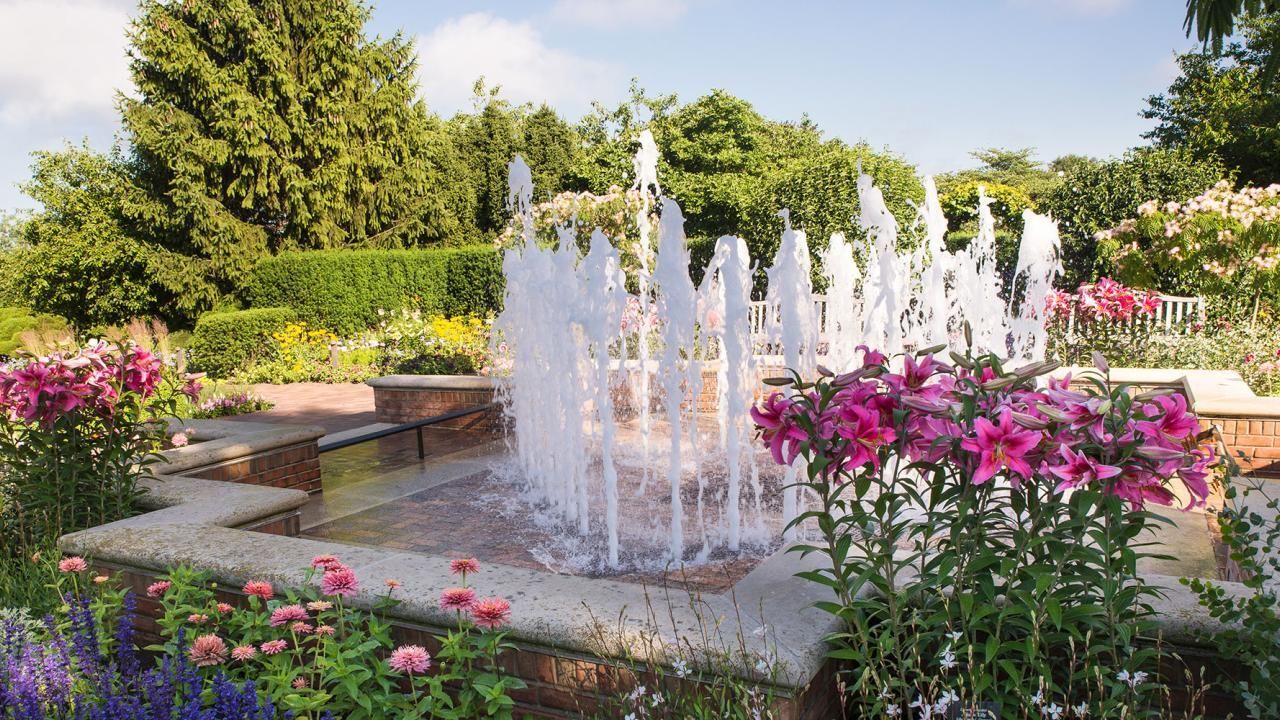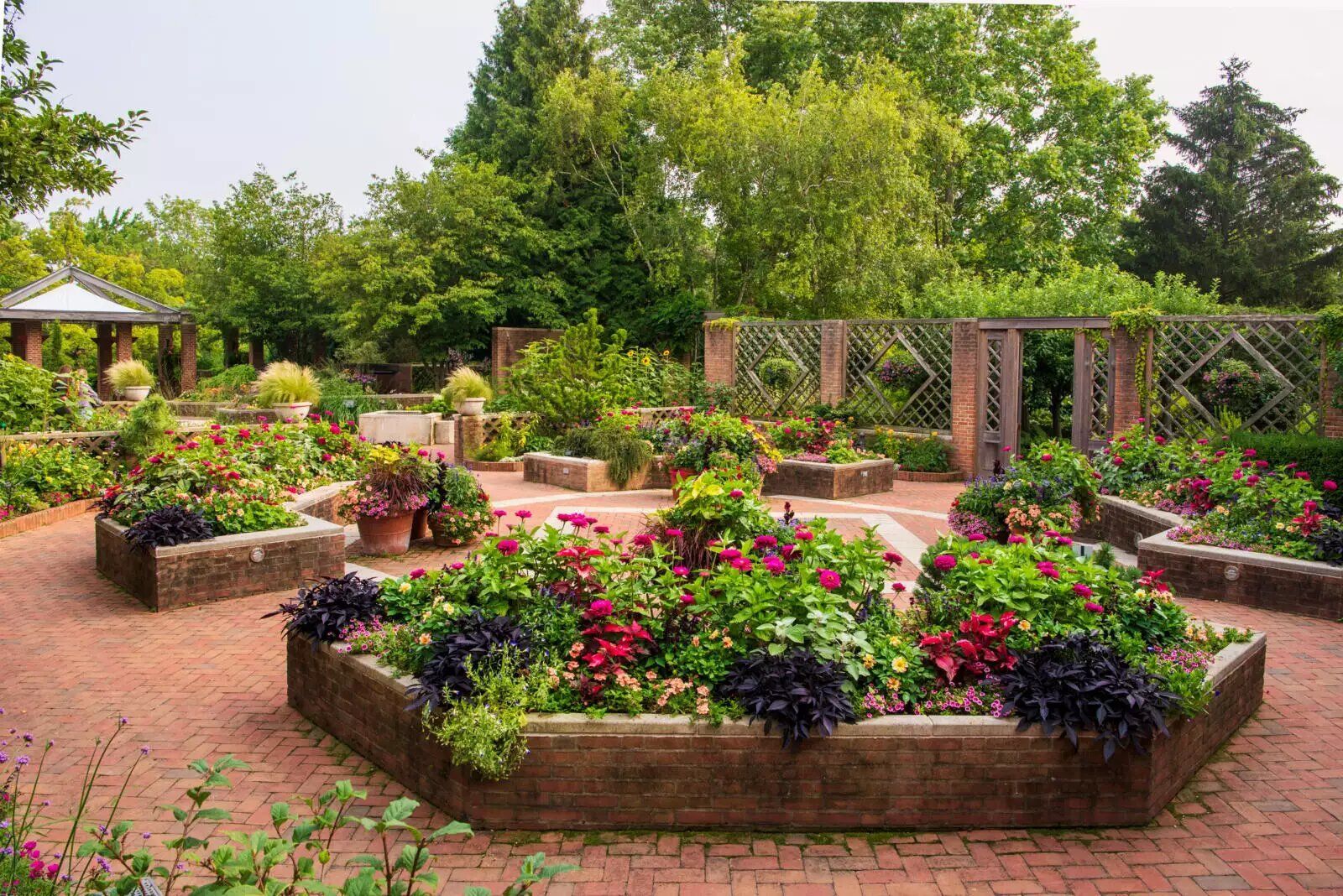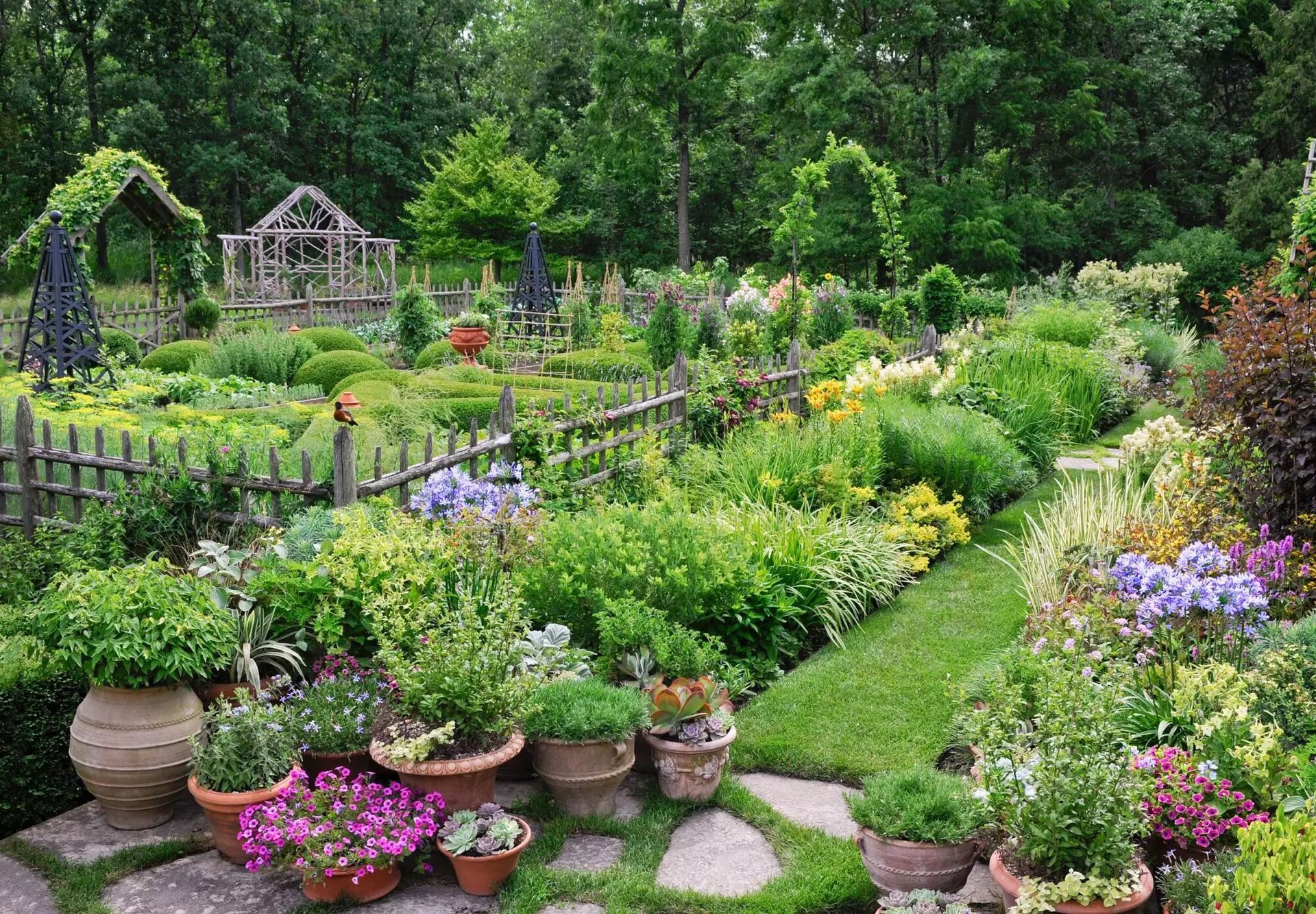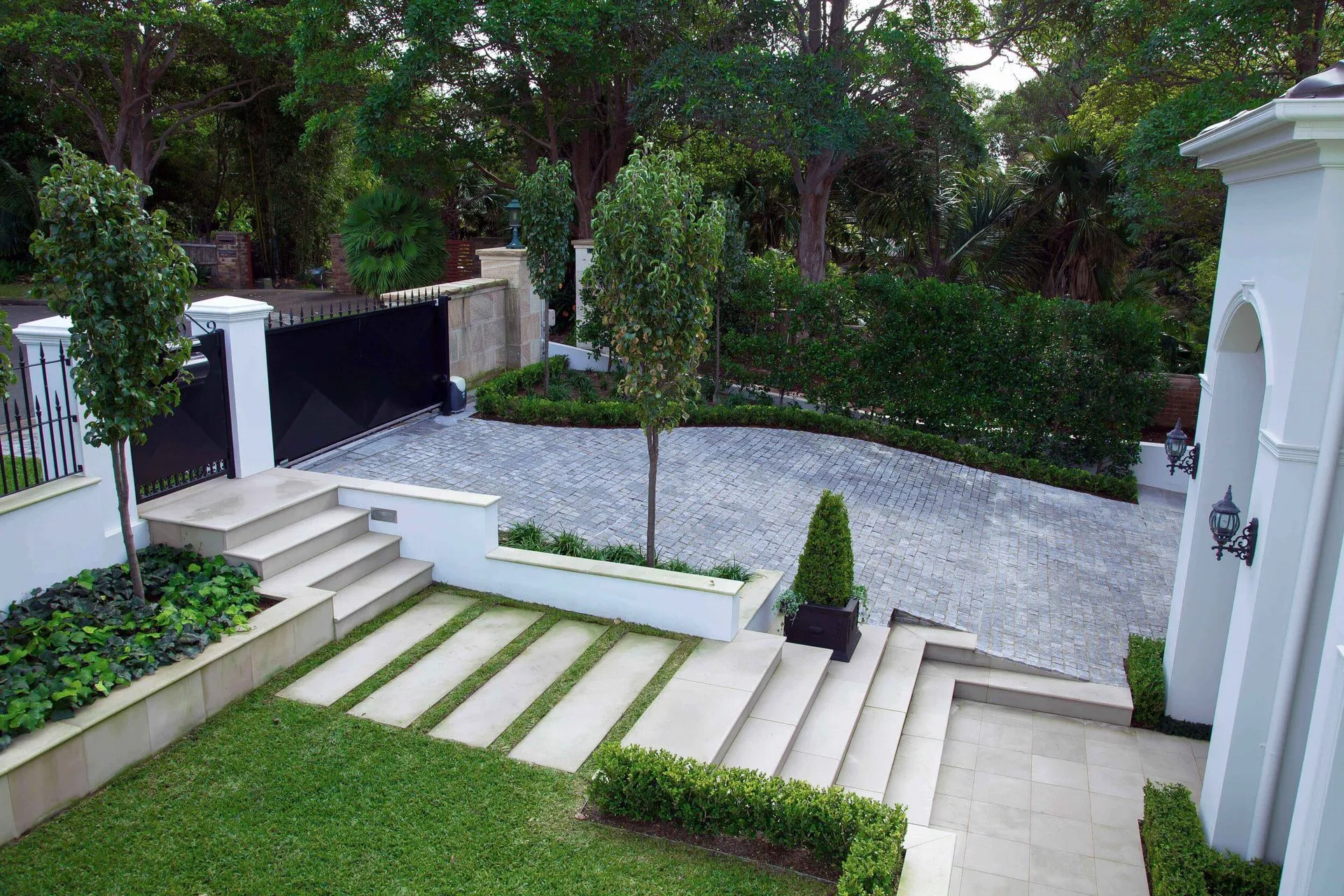Discover the beauty of modern formal landscape design. Simplify with clean lines, simple shapes, and a limited color palette. Achieve elegance and sophistication.
If you want to create a modern formal landscape design or are a fan of clean lines, simple shapes, and a limited color palette, you’re in for a treat. We’ll explore the beauty of modern garden minimalism in formal landscape design, where elegance and sophistication take center stage!
From pruning techniques to knot gardens, distinguished trees to boxwood buxus, and botanical elements to contemporary interpretations, we’ll delve into the key factors that define a modern formal landscape.
So get ready to discover how this style can elevate your outdoor space to new heights of sophistication and style. Let’s dive in and uncover the secrets of creating a modern, formal landscape that will captivate and inspire.

Pruning Techniques for Formal Gardens
Maintaining a neat appearance is crucial in formal gardens, where precision and symmetry are key elements. Pruning is a vital practice that helps shape and maintain the desired look of formal gardens.
Different plants require specific pruning techniques to achieve their optimal growth and appearance. Here are some fundamental pruning techniques for other plants commonly found in formal gardens:
● Pruning Boxwood Hedges
Boxwood Buxus is a classic choice for creating hedges in formal gardens. To maintain a well-defined shape, prune boxwood hedges regularly by trimming the outer edges to create a straight and clean line. Avoid over-pruning, as it can result in bare patches or irregular shapes.
● Pruning Yew Taxus
Yew Taxus is another widespread plant used in formal gardens. Prune yew taxus by shearing the outer layer to create a dense and uniform appearance. Maintain a rounded or conical shape, depending on the desired design.
● Pruning Beech Fagus
Beech Fagus adds warmth and visual interest to formal gardens with golden brown leaves. Prune beech fagus by selectively removing dead or damaged branches and shaping the tree to maintain a neat and symmetrical form.
Tips for achieving well-maintained and symmetrical shapes in formal gardens
● Use sharp pruning tools to make clean cuts and prevent plant damage.
● Regularly inspect and prune plants to maintain their desired shape and prevent overgrowth.
● Consider the natural growth patterns of the plants when pruning and aim for a balanced and symmetrical appearance.
● Step back and assess the overall shape and form of the plants from different angles to ensure a harmonious and visually appealing look.
By employing the appropriate pruning techniques and following these tips, you can achieve a well-groomed and immaculate appearance in your formal garden, enhancing its beauty and elegance.
Knot Gardens: A Classic Element of Formal Landscape Design
A knot garden is a formal garden design that originated in the Renaissance era, characterized by carefully planned and tightly clipped hedges that form intricate patterns resembling woven knots or labyrinths.
Knot gardens were famous in European gardens during the 16th and 17th centuries, often associated with grand estates and palaces. These gardens were designed to be viewed from above, creating a visual spectacle and showcasing the skill and craftsmanship of the garden designers.
Role of Boxwood Buxus in Creating Intricate Patterns in Knot Gardens
Boxwood Buxus is a favored choice for creating intricate patterns in knot gardens due to its dense foliage, its ability to be shaped into precise forms, and its evergreen nature.
Boxwood hedges can be pruned and shaped into various geometric patterns, such as squares, diamonds, and interlocking loops, to form the intricate designs characteristic of knot gardens.
Steps for Designing and Planting a Knot Garden in a Modern Landscape
Designing and planting a knot garden requires careful planning and attention to detail. Here are some steps to consider when incorporating a knot garden into a modern landscape:
● Site Selection
Choose a location in your landscape with ample sunlight and well-drained soil suitable for boxwoods and buxus.
● Design and Layout
Decide on your knot garden’s size, shape, and pattern. Consider the overall aesthetic of your landscape and the desired level of complexity for the knot pattern.
● Plant Selection
Select high-quality boxwood buxus plants that are healthy and suitable for your region’s climate and soil conditions.
● Planting and Pruning
Follow proper planting techniques for boxwood buxus and regularly prune to maintain the desired shape and form of the knot garden pattern.
● Maintenance
Provide adequate water, fertilizer, and pest control as needed to ensure the health and vitality of the boxwood buxus plants in your knot garden.

Boxwood Formal Estate: A Modern Interpretation of a Classic Style
Boxwood formal estate is a popular modern garden style that takes inspiration from classic formal gardens but adds a contemporary twist. This style uses boxwood hedges and neatly bordered knot patterns, creating a sense of order and symmetry in the landscape.
With their clean lines and structured layout, boxwood formal estate gardens exude elegance and sophistication, making them a popular choice for residential and commercial landscapes.
Characteristics of Boxwood Formal Estate
One of the critical characteristics of a formal boxwood estate is the use of low boxwood hedges. These hedges are carefully pruned to create a uniform height and width, adding structure and definition to the garden. In addition, the boxwood hedges can be arranged in various shapes, such as squares, rectangles, or even intricate knot patterns, adding to the overall aesthetic appeal of the garden.
Tips for Creating a Boxwood Formal Estate in a Contemporary Landscape
There are several tips to remember when creating a formal boxwood estate in a contemporary landscape. First, carefully plan the layout and design of the garden to ensure that it achieves the desired level of symmetry and order. Use precise measurements and marking tools to create straight lines and symmetrical shapes for the boxwood hedges and knot patterns.
Choose the correct type of boxwood for your garden, as wide varieties are available with varying growth habits and colors. Consider your location’s climate and soil conditions to select a boxwood variety that will thrive in your area.
Beech Fagus: Adding Golden Brown Leaves to a Modern Formal Landscape
Beech Fagus sylvatica, known for its distinctive golden brown leaves, can be a stunning addition to a modern formal landscape. Here’s how you can incorporate this unique foliage color into your design and the benefits it can bring to your garden.
Introduction to Beech Fagus and Its Unique Foliage Color
Beech Fagus sylvatica is a deciduous tree native to Europe and known for its striking golden brown leaves. These leaves add warmth and visual interest to a landscape, especially during the fall season when they turn a rich hue of brown, creating a dramatic and captivating display.
Ways to Incorporate Beech Fagus in a Formal Landscape Design
There are several ways to incorporate beech Fagus in a formal landscape design:
Specimen Tree
Use beech Fagus as a focal point in your landscape, either as a standalone specimen tree or as part of a grove, to create a commanding presence and add a touch of elegance.
Hedge or Screen
Plant beech Fagus in a row to create a dense hedge or screen, providing privacy and structure to your formal garden while showcasing the unique foliage color.
Understory Planting
Use beech Fagus as an understory planting under taller trees or alongside other shrubs and perennials to add contrast and depth to your landscape.
Benefits of Using Beech Fagus
Incorporating beech Fagus in a modern formal landscape design can offer several benefits, including:
● Unique Foliage Color: The golden brown leaves of beech Fagus add a distinct and eye-catching element to the landscape, creating a warm and inviting atmosphere.
● Seasonal Interest: Beech Fagus provides visual interest throughout the year, with its golden brown leaves in the fall, lush green leaves in the spring and summer, and attractive bark in the winter.
● Low Maintenance: Beech Fagus is relatively low maintenance, making it a practical choice for a modern formal garden that requires minimal upkeep.
Distinguished Trees in Modern Formal Gardens
Trees are crucial in modern formal garden design, providing structure, height, and focal points. Commonly used trees include evergreen and deciduous varieties, carefully selected and placed to create a visually appealing landscape. Size, shape, and seasonal interest are essential when choosing and positioning trees in a formal garden to add a distinguished touch to the overall design.
Boxwood Buxus
A Staple in Modern Formal Landscape Design
Boxwood Buxus has long been a staple in formal landscape design, renowned for its versatility and timeless appeal. With its dense foliage and ability to be shaped into various forms, boxwood Buxus is a classic plant choice for creating hedges, topiaries, and other design elements in modern formal gardens.
From its elegant appearance to ease of maintenance, boxwood Buxus offers endless possibilities for adding structure and sophistication to a formal landscape design.
FAQs for Defining a Modern Formal Landscape Design
Q#1 How can I incorporate botanical elements into a formal garden design?
There are several ways to incorporate botanical elements into a formal garden design. You can create dedicated areas for specific plant collections, such as herb gardens, flower beds, or ornamental grass areas. You can also use botanical plants as focal points or accents in the overall landscape, adding color, texture, and visual interest to the design.
Q#2 Can a formal landscape still be elegant and sophisticated with a minimalist design?
A formal landscape can still be elegant and sophisticated with a minimalist design. The simplicity and clean lines of a minimalist aesthetic can enhance the elegance and sophistication of a formal landscape, creating a sense of modernity and timeless beauty.
Final words
This article briefly describes the elements and factors needed when creating a modern formal landscape design that adds sophistication and visual interest to any outdoor space. Feel free to explore and experiment with different styles and techniques to create a modern, formal landscape design that reflects your style and vision!
Happy landscaping! <3



 Pursu Agency
Pursu Agency